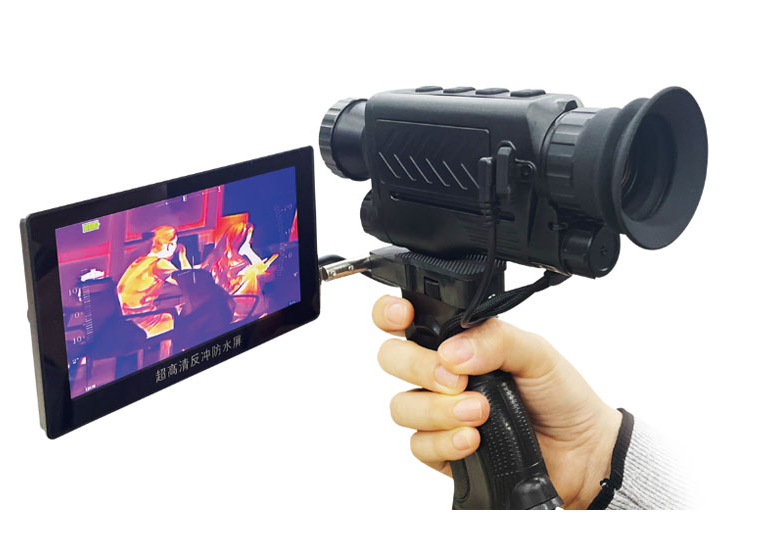Thermal imaging technology has gradually expanded from specialized fields into everyday life and work, with applications spanning night patrols, wildlife observation, engineering inspections, emergency search and rescue, and more. Based on our experience with various "Sky Eye" brand thermal imaging devices, we conducted tests in a variety of real-world scenarios to fully demonstrate the capabilities of thermal imaging cameras.
Night Patrol and Search Performance
In the absence of lighting or in the presence of strong light interference, the human eye struggles to discern distant targets. Thermal imaging cameras, based on temperature differences, can clearly reveal heat sources such as humans, vehicles, and animals. During actual forest patrols, the onick RE45L handheld thermal imager reliably captured heat signals even at distances of 1,500 meters, enabling rapid identification of targets even under cover of trees. The information obtained far exceeds that of standard visible light devices.
Wildlife Observation Applications
Deep into the woods at dusk, the onick RE45L handheld thermal imager's birdwatching mode allows for clear thermal images of birds even when they are hiding in tall grass. This mode enhances the visibility of heat sources, aiding rapid location while significantly minimizing disturbance to the animals.
Building and Engineering Inspection Function Testing
Thermal imaging cameras can effectively identify hidden defects in building structures, such as inadequate exterior wall insulation, defective door and window seals, and roof leaks. During home renovation inspections, the onick RE60 mobile thermal imaging camera can quickly locate areas of abnormal wall temperature. Furthermore, the device can detect abnormally hot wiring and equipment in home appliances, enabling early detection and resolution of safety risks.
Hotel Privacy and Security: Detecting Hidden Hole Cameras
Some hidden hidden hole cameras generate minute amounts of heat when in operation. Even if installed in concealed locations such as corners, ceilings, or electrical outlets, thermal imaging cameras can still identify their presence through temperature differences. During field testing, the onick RE60 quickly scanned suspicious areas in a darkened room. By comparing ambient heat sources, it helped determine the presence of hidden cameras, enhancing privacy and security.
Applications in Search and Rescue and Security Missions
At night or in inclement weather (such as smoke and haze), thermal imaging cameras can penetrate visual obstructions and detect heat signatures emitted by the human body. The Onick RE45L can clearly identify the thermal image of a trapped person even in complete darkness, a capability impossible with conventional visible light devices.
Key Features of the Sky Eye Thermal Imager
Multi-Mode Imaging: Supports various display modes, including black heat, white heat, and fusion, to adapt to diverse environmental requirements.
High-Sensitivity Detection: 20mK/18mK thermal sensitivity captures minute temperature differences.
Intelligent Algorithm Optimization: Features such as AI Summer Mode, Eagle+ 3.0, X³ Super Resolution, and Super Birdwatch effectively identify true heat sources and suppress false signals.

Diverse Form Factors: Available in a variety of models, including the RE45L and RE60 foldable screen handheld, they offer both portability and all-terrain suitability.
Conclusion: Thermal imagers are not only versatile but also play a vital role in many critical situations. Whether for nighttime patrols, nature observation, engineering inspections, privacy protection, or emergency rescue, a suitable thermal imager can serve as a reliable "second pair of eyes." When purchasing a thermal imager, consider its performance specifications and actual needs to maximize its potential.


